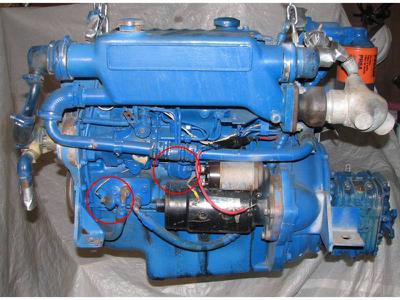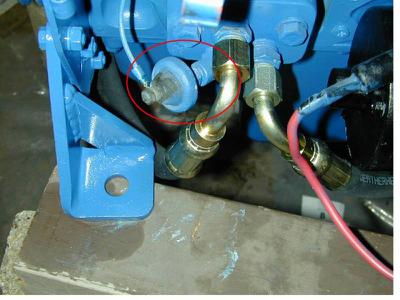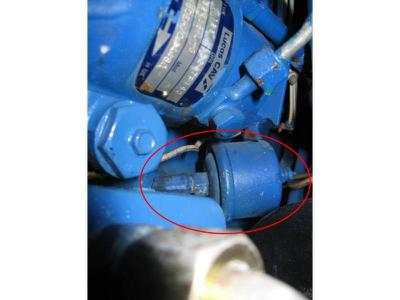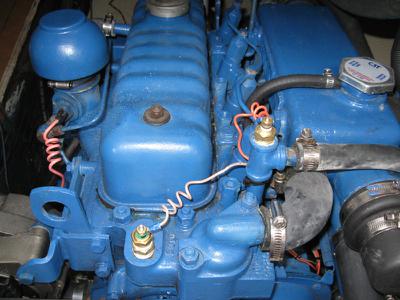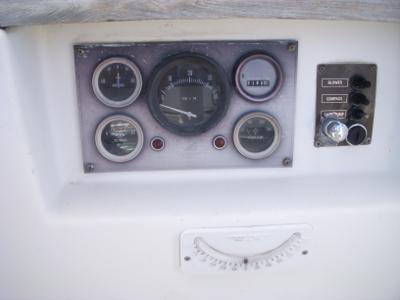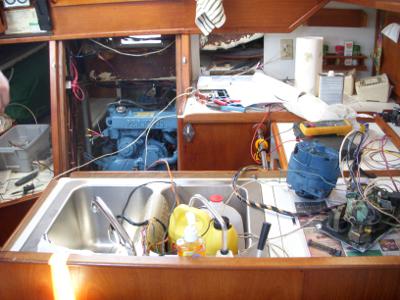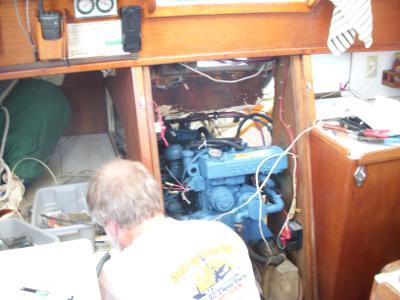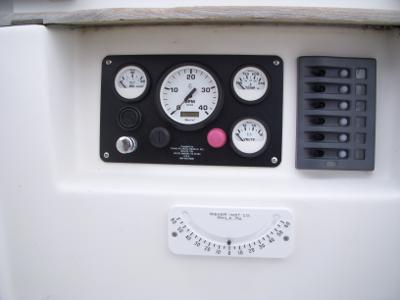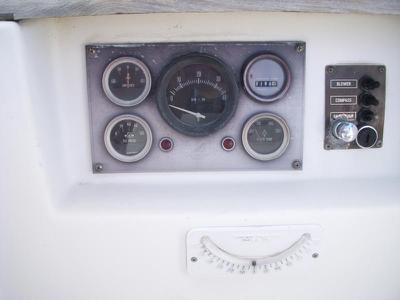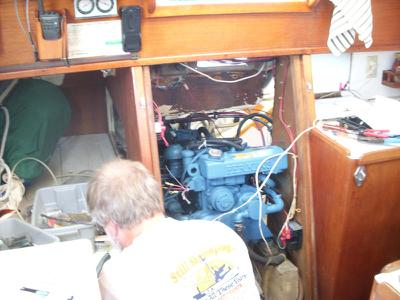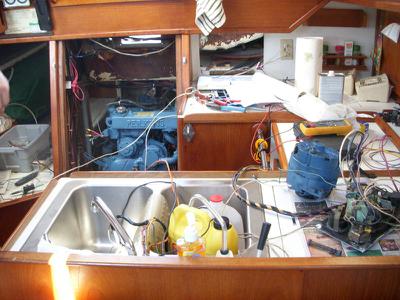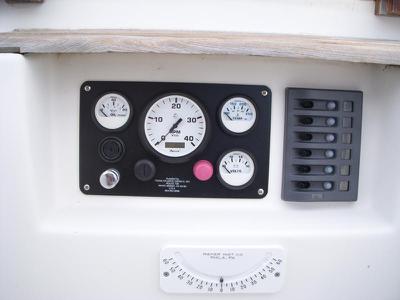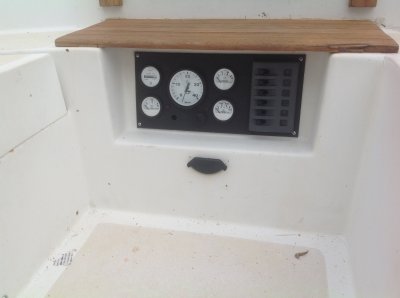Hi Tim:
We completed installation of the engine instruments on Paragon this weekend. Work included new senders, new engine wiring harness, new instruments and panel. Shelton Sawyer who owns Ostara, a M382 sister ship on Lake Lanier helped. We had done the same work on his boat a few weekends earlier. The shared project worked well - provided motivation to get the work done, help, shared tools and resources, etc.
In the process of doing this work I also replaced the starter, installed a new cockpit branch electrical panel to replace the three switches, and assorted other things. I will write in more detail about the process and illustrate it with photos.
First, I will try to answer some of your questions.
- I purchased the instruments, senders, panel, and wiring harness from TransAtlantic Diesel so they were matched and designed for use on a Perkins 4-108.
- The oil pressure sender does not have a brand or model on it. The box was labeled as "SD0003", the sender is stamped 80 psi
- The oil pressure switch is a Cole Hersee "8610"
- the water temperature switch is in a box labelled ISSPRO "R363E", it closes at 200 F, and is 3/8" pipe.
- the water temperature sender was by the same manufacturer but I don't have the model number. Ask TAD. It was also 3/8" pipe so I used an adapter bushing to fit the 1/2" hole on the block.
- I have attached photos of the oil pressure switch and sender - they are on the port side of the engine. I took these when I had the engine out of the boat. (Why I didn't replace them at that time is a good question.) The switch is in front. I removed the starter which made accessing the sender and switch much easier. On Shelton's boat we did it with the starter in place - tough but do-able.
- I have attached a photo of the water temperature switch and sender on the top front of my engine. Sender is threaded into block. Shelton's engine is older with the tank across front. The sender was in the front, the switch was in the back in the top of the head - we could not get it out and re-used it.
- There was no audible alarm on the original panel - there were two warning lights - the one on the port side was for oil pressure, the stbd for water temp. Neither worked on my boat nor did the oil pressure gauge. After the temperature gauge needle broke, it was time for action.
Let me know if you have questions.
View attachment 4549
Oil Senders - Perkins 4-108
View attachment 4550
Oil Pressure Switch - Perkins 4-108
View attachment 4551
Oil Pressure Sender - Perkins 4-108
View attachment 4552
Water Temperature Senders - Perkins 4-108


